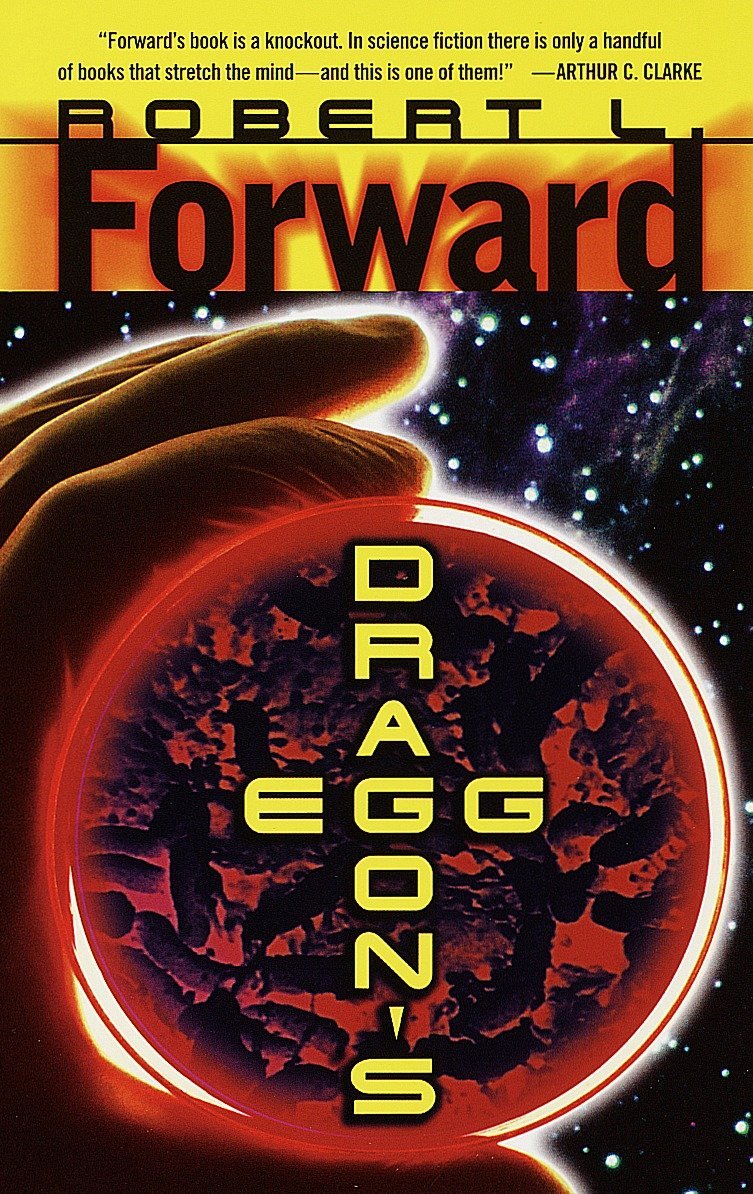Dragon's Egg

Review
Dragon’s Egg is a hard sci-fi novel by . It is the story of first contact between humans and the Cheela: beings who live on a neutron star.
Dragon’s Egg is told through a series of vignettes, each one capturing a pivotal moment in the Cheela’s civilization: the invention of farming and religion, their migration to the southern hemisphere, their first observation of the human orbiter, their detection of the scanning laser and their first contact with the humans, and so on. Rather than following a single overarching narrative, the book chronicles the gradual progression of the Cheela’s society, which is a compelling enough premise in itself.
Dragon’s Egg was partially inspired by ’s Mission of Gravity, but it also reminded me of Flatland. Like the shapes in that book, the Cheela are nearly two-dimensional due to the extreme gravitational gradient on their neutron star. Similar to Flatland, much of the book explores the civilization the Cheela have built. The Cheela are also reminiscent of the beings briefly mentioned as living on a high-gravity world in ’s Childhood’s End. However, what Dragon’s Egg most reminds me of is A Deepness in the Sky. Both novels feature humans orbiting an alien world, with aliens vastly different from humans but narrated in an anthropomorphized manner, and with the aliens’ technology eventually advancing enough to establish contact with the humans.
While I typically don’t enjoy books that rely almost entirely on world-building, like House of Suns or The Quantum Thief, the Cheela characters in each vignette possess enough personality and “humanity” to keep me invested. I found Pink-Eye, the Cheela equivalent of Jesus, to be both humorous and somewhat tragic. I cheered for Swift-Killer, the astronomer-soldier who first conquered the East Pole, and felt a sense of schadenfreude when Soother’s Machiavellian empire collapsed.
A fun addition to the hard science-fiction genre,1 I look forward to reading the sequel, Starquake, next.
-
describes Dragon’s Egg as: “a textbook on neutron star physics disguised as a novel.” ↩